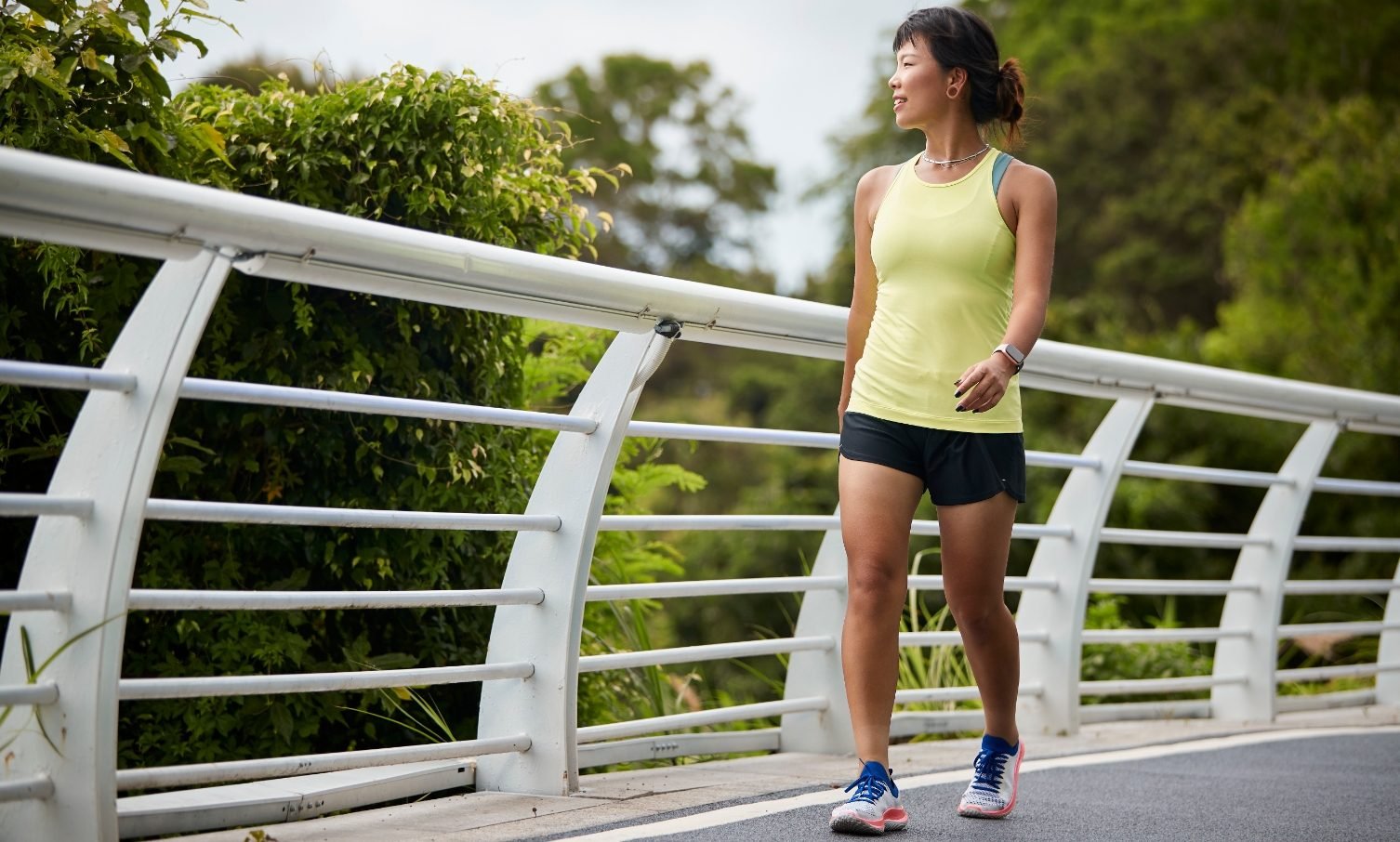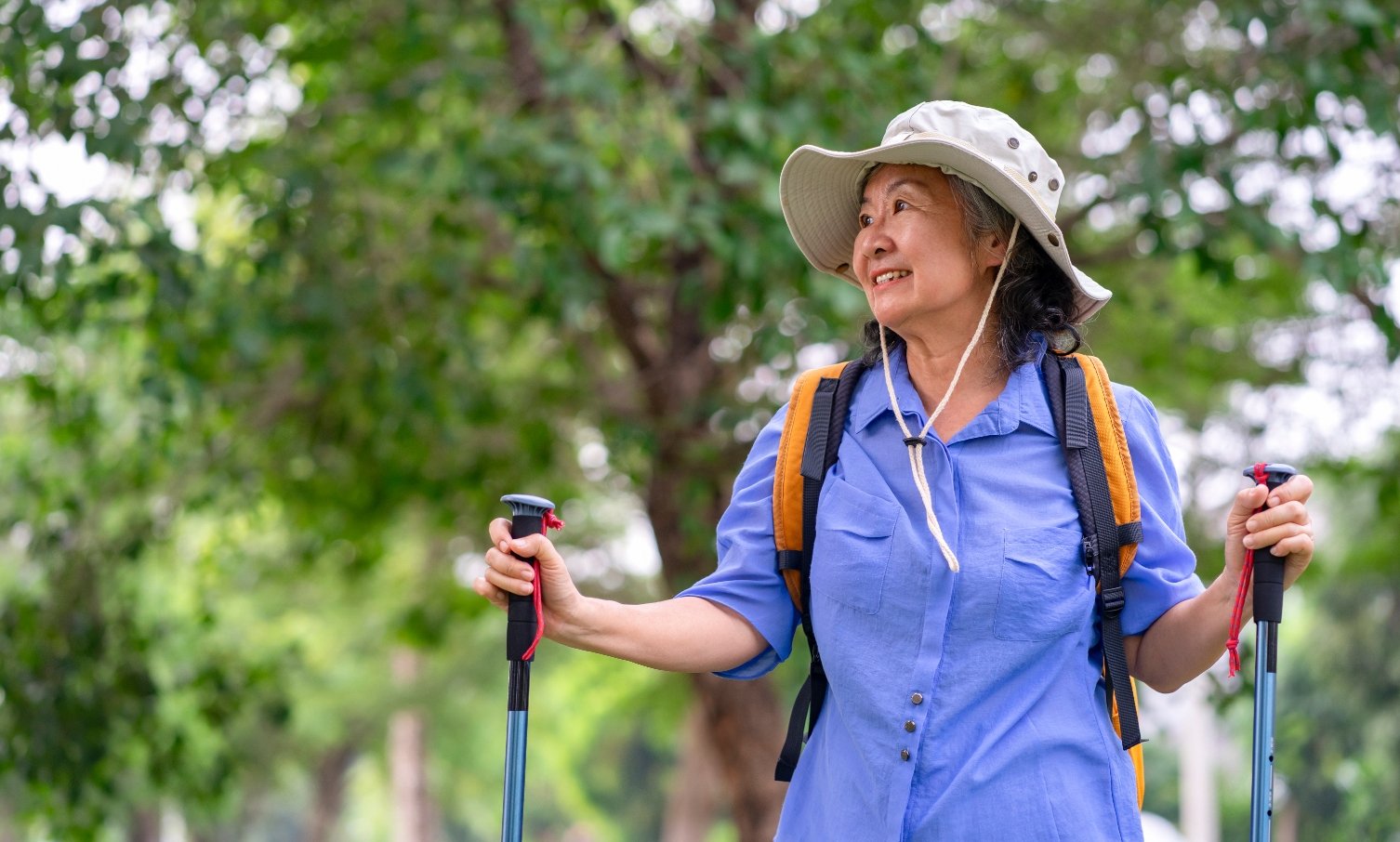Menopause Joint and Muscle Pain Relief: Expert Strategies
Reading time 9 min

Reading time 9 min

Physical symptoms during menopause can range from mildly inconvenient to significantly disruptive1. Studies show that 60–86% of women experience symptoms so bothersome that they seek medical care2, 3.
One of the most common complaints is joint and muscle discomfort, which makes menopause joint and muscle pain relief an important topic for many of us.
What helps joint and muscle pain during menopause?
Hormone therapy, regular exercise, weight management, and physical therapy are key strategies for easing menopause-related joint and muscle pain. Techniques like heat and cold therapy and supplements may also provide relief.
The good news? There are effective strategies backed by science that can help manage these changes. Let’s dive into practical ways to address the physical shifts you’re experiencing. You should discuss all the risks and benefits of the various tools presented below with your healthcare provider.
I cover most significant symptoms and management tools in detail in separate articles under Healthy Body & Mind and Exercise & Nutrition.
Joint and muscle pain, also known as arthralgia and myalgia, are common complaints during menopause. You might notice stiffness in your knees when you get out of bed, aching in your shoulders after minimal activity, or general muscle soreness without a clear cause. Studies show that about 50% of women experience joint and muscle pain during menopausal transition4, 5.
The primary culprit of joint and muscle pain is the decline in estrogen levels. Estrogen has anti-inflammatory properties and helps maintain joint and bone health. As estrogen decreases, inflammation can increase, leading to joint pain and stiffness6, 7. Lower estrogen levels also affect the production of collagen, a protein that supports joint and muscle tissues, causing them to become less resilient8.
Natural aging processes contribute as well. Over time, wear and tear on joints accumulates, and muscle mass tends to decrease—a condition known as sarcopenia. Muscles play a crucial role in supporting and stabilizing joints, and loss of muscle can put additional strain on your joints9.

Weight gain during menopause adds extra pressure on weight-bearing joints like the knees and hips10. Sleep disturbances can exacerbate pain perception, making aches feel more intense11.
Managing menopause-related joint and muscle pain often requires a multi-pronged approach. From medical treatments like hormone replacement therapy to lifestyle changes such as regular exercise and weight management, a variety of strategies can help reduce discomfort and improve mobility. Let’s explore some of the most effective options available.
HRT can help alleviate joint and muscle pain by replenishing estrogen levels, thereby reducing inflammation and supporting joint health. Studies have shown that women on HRT report less joint pain compared to those not using hormone therapy12, 13.
HRT isn’t suitable for everyone. It’s essential to discuss with your healthcare provider whether HRT is appropriate for you, considering the potential risks and benefits.
Activities like walking, swimming, and cycling improve joint mobility and reduce stiffness without putting excessive strain on your joints14, 15. Aim for around 150 minutes of moderate aerobic activity per week.
Incorporating resistance exercises 2–3 times a week to build muscle mass supports and protects your joints16, 17. This can include using free weights, resistance bands, or body-weight exercises like squats and lunges.
Yoga and Pilates improve flexibility, balance, and muscle strength, helping to alleviate joint pain and reduce the risk of falls18.
Losing excess weight reduces the stress on your joints, particularly your knees and hips. Even a small amount of weight loss can make a significant difference in pain levels and joint function19.
A physical therapist can develop a personalized exercise program to strengthen muscles around the joints, improve flexibility, and reduce pain20.
Regular massages can relieve muscle tension, improve circulation, and enhance joint mobility21.
Nonsteroidal anti-inflammatory drugs (NSAIDs) containing active ingredients such as ibuprofen or naproxen can help reduce inflammation and alleviate pain22. Creams and gels containing menthol, capsaicin, or diclofenac can provide localized pain relief23. These are effective ways dealing with pain, but they will not solve an underlying reason and best when used sparingly.
Heat and cold therapy can temporarily help with pain. Applying a warm towel or heating pad can relax muscles and increase circulation. Using an ice pack can reduce inflammation and numb sore areas24, 25. Heat/cold therapy is not a permanent fix, but sometimes these small comforts can make a big difference in getting through the day.
Some studies suggest glucosamine and chondroitin may help with joint pain, although results are mixed26.
Did you know your hormones might influence how you feel pain? Research shows that hormones like estrogen and progesterone can both amplify and reduce pain, depending on their levels and fluctuations27. Well-controlled studies suggest that healthy, pain-free pre-menopausal women don’t experience major shifts in pain perception during different menstrual cycle phases.
Interestingly, brain scans reveal changes in pain-related brain activity across the menstrual cycle, even when no pain is reported. This hints that our brain’s pain and body awareness systems are more tuned to hormone fluctuations than we realize. Scientists are calling for more research to explore how these hormone-pain connections evolve during life stages like perimenopause and menopause.
Some research claims menopause affects different types of pain in different ways. For example, headaches and neck or lower back pain often get better or even go away after menopause. However, some types of moderate pain can actually become worse28.
That stiffness in the morning or those unexpected aches after minimal effort? You’re not alone. About half of us experience joint and muscle pain during the menopausal transition. The drop in estrogen, with its anti-inflammatory and collagen-supporting properties, plays a big role. Add-in aging, weight changes, and sleep disturbances, and it’s no wonder our joints and muscles start protesting. But here’s the thing: while these changes are natural, they’re not something you have to simply endure.
I’ve been there myself. Knee and shoulder pain were constant struggles for me, and nothing seemed to work until I committed to resistance training with free weights.
Building muscle through strength-focused workouts not only supported my joints but nearly eliminated the pain altogether. I also found supplements like glucosamine helpful in maintaining joint health. Movement is your ally, and small adjustments—like adding heat therapy, cold packs, or even a massage—can make a big difference. The goal isn’t just to manage pain but to regain control so you can move, feel, and thrive.
Menopause will bring challenges, but it’s also an opportunity to rediscover your strength and take care of your body in ways that truly work for you.
Dr. Jūra Lašas
1.
Laine, C. et al. Menopause. (2009) https://doi.org/10.7326/0003-4819-150-7-200904070-01004
2.
Constantine, G. et al. Behaviours and attitudes influencing treatment decisions for menopausal symptoms in five European countries. (2016) https://doi.org/10.1177/2053369116632439
3.
Williams, R. et al. Healthcare seeking and treatment for menopausal symptoms in the United States. (2007) https://doi.org/10.1016/j.maturitas.2007.09.006
4.
Lu, C. et al. Musculoskeletal Pain during the Menopausal Transition: A Systematic Review and Meta-Analysis. (2020) https://doi.org/10.1155/2020/8842110
5.
Watt, F. Musculoskeletal pain and menopause. (2018) https://doi.org/10.1177/2053369118757537
6.
Khosla, S. Update on estrogens and the skeleton. (2010) https://doi.org/10.1210/jc.2010-0856
7.
Magliano, M. Menopausal arthralgia: Fact or fiction. (2010) https://doi.org/10.1016/j.maturitas.2010.04.009
8.
Talwar, R. et al. Effects of estrogen on chondrocyte proliferation and collagen synthesis in skeletally mature articular cartilage. (2006) https://doi.org/10.1016/J.JOMS.2005.12.006
9.
Khadilkar, S. Musculoskeletal Disorders and Menopause. (2019) https://doi.org/10.1007/s13224-019-01213-7
10.
Messier, S. et al. Weight loss reduces knee-joint loads in overweight and obese older adults with knee osteoarthritis. (2005) https://doi.org/10.1002/art.21139
11.
Finan, P. et al. The association of sleep and pain: an update and a path forward. (2013) https://doi.org/10.1016/j.jpain.2013.08.007
12.
Welton, A. et al. Health related quality of life after combined hormone replacement therapy: randomised controlled trial. (2008) https://doi.org/10.1136/bmj.a1190
13.
D’Elia, H. et al. Influence of hormone replacement therapy on disease progression and bone mineral density in rheumatoid arthritis. (2003) https://pubmed.ncbi.nlm.nih.gov/12858441/
14.
Sydora, B. et al. Can walking exercise programs improve health for women in menopause transition and postmenopausal? (2020) https://doi.org/10.1097/GME.0000000000001554
15.
Alkatan, M. Improved Function and Reduced Pain after Swimming and Cycling Training in Patients with Osteoarthritis. (2016) https://doi.org/10.3899/jrheum.151110
16.
Asikainen, T. et al. Effect of brisk walking in 1 or 2 daily bouts and moderate resistance training on lower-extremity muscle strength, balance, and walking performance in women who recently went through menopause: a randomized, controlled trial. (2006) https://doi.org/10.1093/PTJ/86.7.912
17.
Sá, K. et al. Resistance training for postmenopausal women: systematic review and meta-analysis. (2022) https://doi.org/10.1097/GME.0000000000002079
18.
Fernández-Rodríguez, R. et al. Effectiveness of Pilates and Yoga to improve bone density in adult women: A systematic review and meta-analysis. (2021) https://doi.org/10.1371/journal.pone.0251391
19.
Panunzi, S. et al. . Comparative efficacy of different weight loss treatments on knee osteoarthritis: A network meta‐analysis. (2021) https://doi.org/10.1111/obr.13230
20.
Fransen, M. et al. Exercise for osteoarthritis of the knee: a Cochrane systematic review. (2015) https://doi.org/10.1136/bjsports-2015-095424
21.
Listiana, E. e al. Massage Therapy to Relieve Menopausal Symptoms: A Systematic Review. (2022) https://doi.org/10.26714/jk.11.1.2022.9-20
22.
Kirchner, J. Nonsteroidal anti-inflammatory drug use in the elderly: Issues of compliance and safety. (1994) https://doi.org/10.7556/JAOA.1994.94.4.300
23.
Rodriguez-Merchan, E. Topical therapies for knee osteoarthritis. (2018) https://doi.org/10.1080/00325481.2018.1505182
24.
Wang, Y. et al. Heat and cold therapy reduce pain in patients with delayed onset muscle soreness: A systematic review and meta-analysis of 32 randomized controlled trials. (2021) https://doi.org/10.1016/j.ptsp.2021.01.004
25.
Wang, Y. et al. EFFECT OF COLD AND HEAT THERAPIES ON PAIN RELIEF IN PATIENTS WITH DELAYED ONSET MUSCLE SORENESS: A NETWORK META-ANALYSIS. (2021) https://doi.org/10.2340/jrm.v53.331
26.
Meng, Z. et al. Efficacy and safety of the combination of glucosamine and chondroitin for knee osteoarthritis: a systematic review and meta-analysis. (2023) https://doi.org/10.1007/s00402-021-04326-9
27.
Iacovides, S. et al. Does pain vary across the menstrual cycle? A review. (2015) https://doi.org/10.1002/ejp.714
28.
Meriggiola, M. et al. Menopause affects pain depending on pain type and characteristics. (2012) https://doi.org/10.1097/gme.0b013e318240fe3d